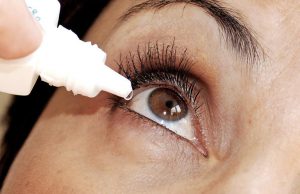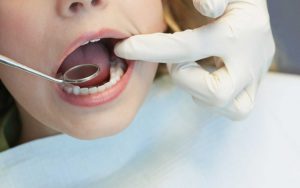Sjogren’s Syndrome is an autoimmune disorder that affects the salivary glands in your mouth and the tear glands in your eyes, causing them to dry up. The decrease in the production of tears and the saliva is the main identification factor for Sjogren’s syndrome.
However, in some people, this condition is difficult to diagnose, since it is found associated with other autoimmune conditions like Rheumatoid arthritis and Lupus. Women are more affected by Sjogren’s syndrome than men. And if you are above 40, it’s best to watch out for the symptoms of Sjogren’s syndrome and avail treatment as soon as possible.
Swedish ophthalmologist, Dr. Henrik Sjogren first identified a group of women suffering from arthritis having dry eyes and dry mouth. Hence the condition is named after Dr. Sjogren, as Sjogren’s syndrome. The doctors are able to offer advice on how to live with this condition while treating the symptoms.
Symptoms
Sjogren’s syndrome is characterized by dry mouth and dry eyes, which form the identifying symptoms of the condition.
- Dry mouth: You may feel like your throat is stuffed with cotton making it difficult to swallow or speak. Some people complain to have a chalky feeling in the mouth.
- Dry eyes: The eyes will have a burning and itchy feeling, associated with grittiness. This increases the risk of infections in and around the eyes.
Apart from the main symptoms, there are few other symptoms associated that one might experience. It is important to note that this condition can also affect other parts of your body, followed by these symptoms.
- Dryness of nose, lips and mouth and skin.
- Inflammation of glands in your face and neck, particularly the ones behind your jaw and in front of your ears.
- Vaginal dryness & Pelvic pain in women.
- The decrease in the production of saliva can cause the formation of cavities and tooth decay.
- Dry mouth can lead to inflammation of gums causing gingivitis.
- Yeast infections in the mouth due to dryness.
- Swelling, pain, and stiffness in joints, similar to Rheumatoid arthritis.
- A dry cough that won’t go away.
- Feeling tired all the time along with tingling sensations in hand and feet, from time to time.
- Cancer treatmentof the lungs, liver, and kidneys.
- Some people complain of a burning sensation that travels from the stomach to the chest.
- In some people, Sjogren’s syndrome is associated with cancer of lymph glands called lymphoma.
Causes

- Genetic Causes: The cause of Sjogren’s syndrome is considered mostly genetic. Some people may harbor a gene that causes their white blood cells (disease-fighting army of cells) to attack the healthy cells, instead of the harmful ones, hence it is also considered as an autoimmune disease. There is no evidence as to why some people develop this autoimmune disease, except that it can be genetic.
- An infection due to virus/bacteria: The gene associated with Sjogren’s syndrome may be triggered by an infection with a particular set of bacteria or virus. The presence of an infection activates the white blood cells to fight the infection, however, in this case, the white blood cells get confused and start attacking the healthy cells (autoimmune response) as well, especially the ones located in salivary glands and tear glands.
Diagnosis
Sjogren’s syndrome is mostly left undiagnosed because its symptoms can be confused with many other related or non-related conditions.
Your doctor may perform some tests to rule out other conditions and get a correct diagnosis.
- Blood tests
Blood tests are done in order to detect the presence of the Sjogren’s syndrome and the effect it has on your body.
- Presence of inflammation, evidenced by increased ESR or CRP
- Abnormal functioning of liver and kidney treatment.
- Abnormality in the count of red blood cells and white blood cells.
- A large number of antibodies may be found in the blood.
- Eye tests
Schirmer tear test: The number of tears produced by your eyes is measured by this test. Your doctor will place a small filter paper under your lower eyelid, which collects the tears produced by your eye.
Slit-lamp test: Dryness in your eyes can cause damage to your cornea. The doctor may administer drops in your eyes and further examine your eyes for any corneal damage by using a magnifying device called a slit lamp.
- Biopsy of the lip
Sjogren’s syndrome leads to inflammation of the cells inside the lip, they may look like clusters. A small amount of tissue is removed from the lip and examined under the microscope to take a better look at the salivary glands inside your lip.
- Imaging
Imaging procedures are performed to check the amount of saliva produced in your mouth by two methods:
- Sialogram: This procedure involves injecting a dye (colored substance) into your salivary glands located in front of your ears. This technique allows you to see the amount of saliva flowing through your mouth.
- Salivary scintigraphy: A radioactive isotope is injected in your vein and it is tracked for about an hour to see how quickly it arrives in all your salivary glands.
Treatment

The symptoms of Sjogren’s syndrome can be relieved by taking proper care like sipping water more frequently and using over the counter moisturizing eye drops. However, some people still have difficulty going about their daily routine with the symptoms and hence require treatment. Depending on the level of dryness, your doctor will recommend either of these treatment options.
Medications
The doctor may prescribe the symptom-specific medications which include:
- Drugs that reduce the inflammation of your eyes: For moderate to severe dryness of the eyes, your doctor will prescribe moisturizing eye drops. This will also help reduce the inflammation in the eye caused by eye dryness.
- Drugs that increase the production of saliva: Your doctor may recommend some medications that increase the production of saliva and tears, which subsides the dryness in the eyes.
- Drugs that attack specific infections/ complications: Yeast infections caused due to dryness in the mouth will require treatment with antifungal medications.
- Rheumatoid arthritis may occur as a complication of inflammation of the joints, which will need to be treated by specific non-steroidal anti-inflammatory medicines (NSAIDs) or arthritis medicines.
- Drugs that suppress the overactive immune system: Your doctor may prescribe medicines that help suppress the production of antibodies by white blood cells. This will help stop the white blood cells from attacking the healthy cells and suppress the autoimmune response.
Surgery
Punctal occlusion is a type of surgery that can be performed in people suffering from severe symptoms of Sjogren’s syndrome. The surgery is done by sealing the tear ducts that drain tears from your eyes. This is done by inserting collagen or silicone plugs in the tear ducts to preserve your tears and prevent them from drying up.
Prevention

Sjogren’s syndrome is an autoimmune disease which is genetic and preventing it might not be possible. However, it is possible to manage the symptoms associated with the condition from getting worse. By taking simple self-care measures, it is possible to lead a healthy and normal life with Sjogren’s syndrome.
Self-care measures for preventing dry eyes:
- Applying eye lubricant or using artificial tears: Applying eye lubricant (ointment, gel) overnight can help restore the moisture in your eyes. Ointments or gels are thick in consistency and tend to blur your vision for sometime after application, so it’s best to use them during bedtime. For day time eye dryness, use tear drops with no preservatives. The preservatives cause itchiness and redness in people with dry eye syndrome.
- Humidify your surroundings: Avoid getting your eyes and mouth dry by increasing humidity around you. Stay away from things that cause dryness, like direct contact with blowing air (sitting directly under a fan, or air vent). Try wearing goggles when outside, to protect your eyes from the direct blow of air or heat, that can cause dryness in eyes.
Self-care measures for preventing dry mouth:

- Quit smoking: Smoking increases dryness in the mouth, causing irritation and inflammation.
- Keep yourself hydrated: Drink water frequently to keep your lips and mouth moist. Try sipping water now and then, to help avoid dry mouth. Avoid drinking caffeinated beverages and acidic drinks, like alcohol, colas etc, as they promote dryness in the mouth
- Increase your saliva by stimulation: Production of saliva can be done by stimulating the glands with some citrus-flavored candies. However, avoid sweets as much as you can, as you will be at high risk of cavities with Sjogren’s syndrome.
- Use artificial saliva: Replace water with artificial saliva. They are available in the form of sprays or lozenges. Artificial saliva contains lubricants which can keep your mouth moist for a longer time, than just plain water.
- Clear your nose to avoid mouth breathing: Clogged nose can give way to mouth breathing, consciously or unconsciously. Breathing through your mouth will increase dryness and worsen it. So keep your nose unclogged by using nasal saline sprays, which facilitate easy breathing.
Prevent dental problems
Sjogren’s syndrome causes dry mouth, which increases the formation of dental cavities & Wisdom teeth Your saliva is known to have properties that fight infections in your mouth while keeping it moist. However, when there is less production of saliva, your mouth becomes a breeding ground for cavities. Take good care of your dental hygiene to avoid cavities and eventual loss of teeth by following daily dental check up.
- Make your oral hygiene a priority by brushing your teeth twice a day and flossing every day.
- Visit your dentist for regular dental checkups every six months
- Using an antimicrobial mouthwash and topical fluoride treatments every day can help keep the cavities and infections in your mouth away.
Prevent drying up of your skin and other body parts
- Avoid using hot water for a shower, as it dries up your skin faster.
- Pat dry with a towel, instead of rubbing. Immediately apply the moisturizer when your skin is still damp. This helps restore the moisture in your skin faster.
- Wear gloves while using household cleaning, like washing dishes etc. to prevent dry hands.
- For women with vaginal dryness, using vaginal lubricants will help.
Today it is possible to live a normal life, while managing the symptoms of Sjogren’s syndrome, provided you get the right treatment from adoctor online .


















